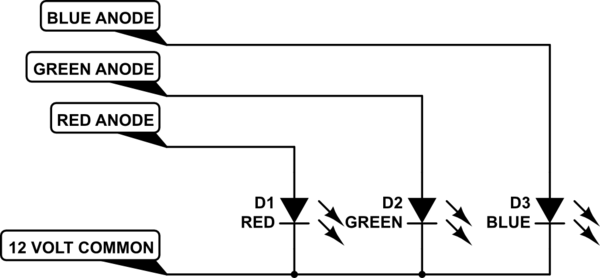I just completed an introductory course in digital design. During the course I designed a circuit for driving multi-color LED's with an automotive application (for a personal project). The following is what I made:

The circuit basically turns the LEDs amber and makes them blink when the turn signal comes on. After designing the circuit I decided that I wanted to control enough about 450-500 LEDs with it. The LED strips I'm using are set up for 12 Volt power sources and 450 of them would require 10 Amps.
I'm including the datasheet for the strips themselves (even though it isn't all that informative): LED Data Sheet
I did some research and it seemed to me that transistors were the thing to use for switching given the 12V 10A load. I should note that the control circuit will be run off of a 5V regulator and the LEDs off of a 12V regulator. At least that's the plan.
So here is the circuit after labeling where the transistors will be (labeled as "Trans.").

Now the task of transistor selection arose and I'm struggling because I am in entirely unfamiliar territory. I need to measure the output from the turn signal before I can select those transistors, but I can select the transistor coming from that OR gate. Here is the OR gate I'm planning on using: OR Gate
I have to say I'm slightly confused that there is a negative value in the "Maximum High Level Current" category. Other than that I know I need to select an appropriate Hfe and I'm fairly sure, based on my reading, that I want an NPN transistor.
Any selection advice is very much appreciated. I realize that there are other more common ways to run LEDs like PWMs. I used combinational logic because it was the only thing I knew and it still is the only area of electronics with which I have any experience. I am willing to consider other methodology if I really should, but the functionality I'm making is fairly simple and I feel like I'm just a few components away from making it work. I'm open to all commentary, suggestions, advice, et cetera. I'm totally new to electronics so I may have to ask for further explanation of some comments, but we all have to start somewhere!




